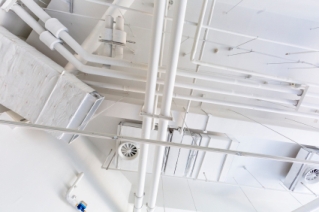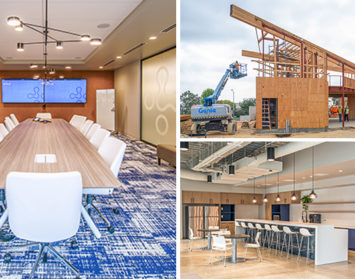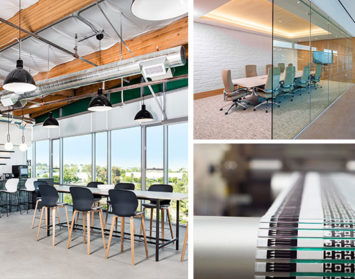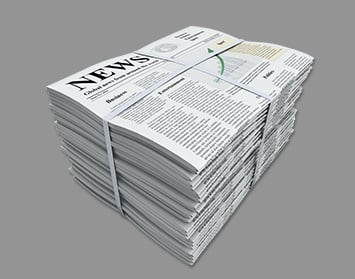Avoiding an uncomfortable situation
Fourth in the Project Design Elements Series
 More and more of our clients are taking existing space and ending up with fewer and fewer TI allowance dollars to pay for improvements. The lower TI allowances are being driven by the rising rental rates and our client’s desire to keep their lease rate as low as possible. Unfortunately, this may lead to some serious issues down the road if the heating, ventilation, and air conditioning systems (HVAC) are not thoroughly inspected and the layout and sequence of operations are understood. Many of our clients, trying to save money, falsely assume the existing systems are in good working order and meet their requirements. When looking at the costs to occupy existing space, there are four main items that should be considered when trying to reuse the existing HVAC systems.
More and more of our clients are taking existing space and ending up with fewer and fewer TI allowance dollars to pay for improvements. The lower TI allowances are being driven by the rising rental rates and our client’s desire to keep their lease rate as low as possible. Unfortunately, this may lead to some serious issues down the road if the heating, ventilation, and air conditioning systems (HVAC) are not thoroughly inspected and the layout and sequence of operations are understood. Many of our clients, trying to save money, falsely assume the existing systems are in good working order and meet their requirements. When looking at the costs to occupy existing space, there are four main items that should be considered when trying to reuse the existing HVAC systems.
Condition of the Existing Equipment
The condition of the existing HVAC system is critical to the reuse of it. Rooftop mounted package units have a useful live of 8-12 years, WSHP systems hold up for 10-15 years, and VAV boxes last 15-20 years. If your equipment is close to this age, then you may experience breakdowns or have units that are not performing to their original specifications and are not very energy efficient. If your units are near this age, they should be thoroughly inspected, cleaned and repaired, or replaced. The landlord should also warrant that the existing units be fully functional and operational before you take possession of the space and warranty the units for one year. Another component that is often overlooked are the controls. These are the low voltage controls that connect the thermostat to the units and the central plant equipment. If these components are not thoroughly inspected and proper operation confirmed, you could experience a large number of issues related to temperature and control of the heating and cooling of the space.
Capacity
More and more, our clients are putting employees in smaller and smaller spaces or taking out offices and replacing them with cubicles. This allows them to put more people in the space, but adds a tremendous amount of load to the HVAC systems. For example, if you had four private offices that contained four employees and four computers and removed them for cubicles, you could possibly have ten employees and ten computers in the same area, thus more than doubling the heat load on the space. It is important that you consider the changes you will be making to the space and the number of people you will have working in the space. You may be able to reuse the existing systems, but may have to supplement them with additional cooling,
Zoning
Unless you are taking the space as-is and not making any changes, you will most likely need to reconfigure the layout of the HVAC systems. Let’s say for example you have four private offices. They would all typically share one thermostat. Now let’s say you reconfigured this space to be two medium size conference rooms. If you left the systems as is, you would only have one thermostat for the two conference rooms. This would not be an acceptable solution and another zone should be added for the second conference room. In addition, if you were only taking a portion of an existing space, there might be a few HVAC units that serve zones that would now be separated by a demising wall. This could lead to a situation where the thermostat for your space is in the adjacent tenant’s space. This, of course, would not be ideal and the systems and spaces would have to be separated.
Special Requirements
Lastly, your firm will most likely have some sort of special requirements that the previous tenant did not have. You may have larger conference rooms, training rooms, a larger server room or one with more equipment in it. All of these specialty areas need to be looked at closely and the existing systems evaluated to confirm they will meet or exceed your requirements.
In closing, it is important to note that although there may be an existing HVAC system in the existing space, it may not function properly or it may not meet your specific requirements, and most likely it will cost more then you anticipate to rectify. A licensed mechanical engineer should be retained to review the existing systems, complete a basis of design for your new requirements, and then design the required system modifications.
Hughes Marino’s industry leading Program, Project and Construction Management team has unmatched expertise in every type of commercial building project from tenant improvements to ground-up build-to-suits. With decades of experience, our project managers, engineers and LEED APs offer practical insights for the construction management professional.









